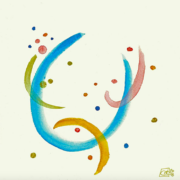Multifamily sessions and the psychoanalysts
Abstract
Classical psychoanalytical training was based on a paradigm in which both the etiology and the cure were centered on the subject. New clinical demands forced to revise that “ideal model.” Using a language of his own and an extended metapsychology, the Argentine psychoanalyst Jorge García Badaracco devised a new way of seeing mental illness and a novel therapeutic framework he called “multifamily psychoanalysis,” focused on the structure and fabric of the family and the interactions taking place within it. Multifamily sessions came to be a training school for those therapists who had to intervene in families with seriously ill, seemingly “intractable” members, who showed a true lack of ego resources. This paper endeavors to differentiate the analyst’s “persona” from his or her “actual presence” in the therapy, and emphasizes the incidence the latter has on each kind of intervention. This approach and the way it has remodeled traditional psychoanalytic work are very much in line with some of Freud’s ideas such as stated in his article “New Ways of Psychoanalytic Therapy” (1918).


